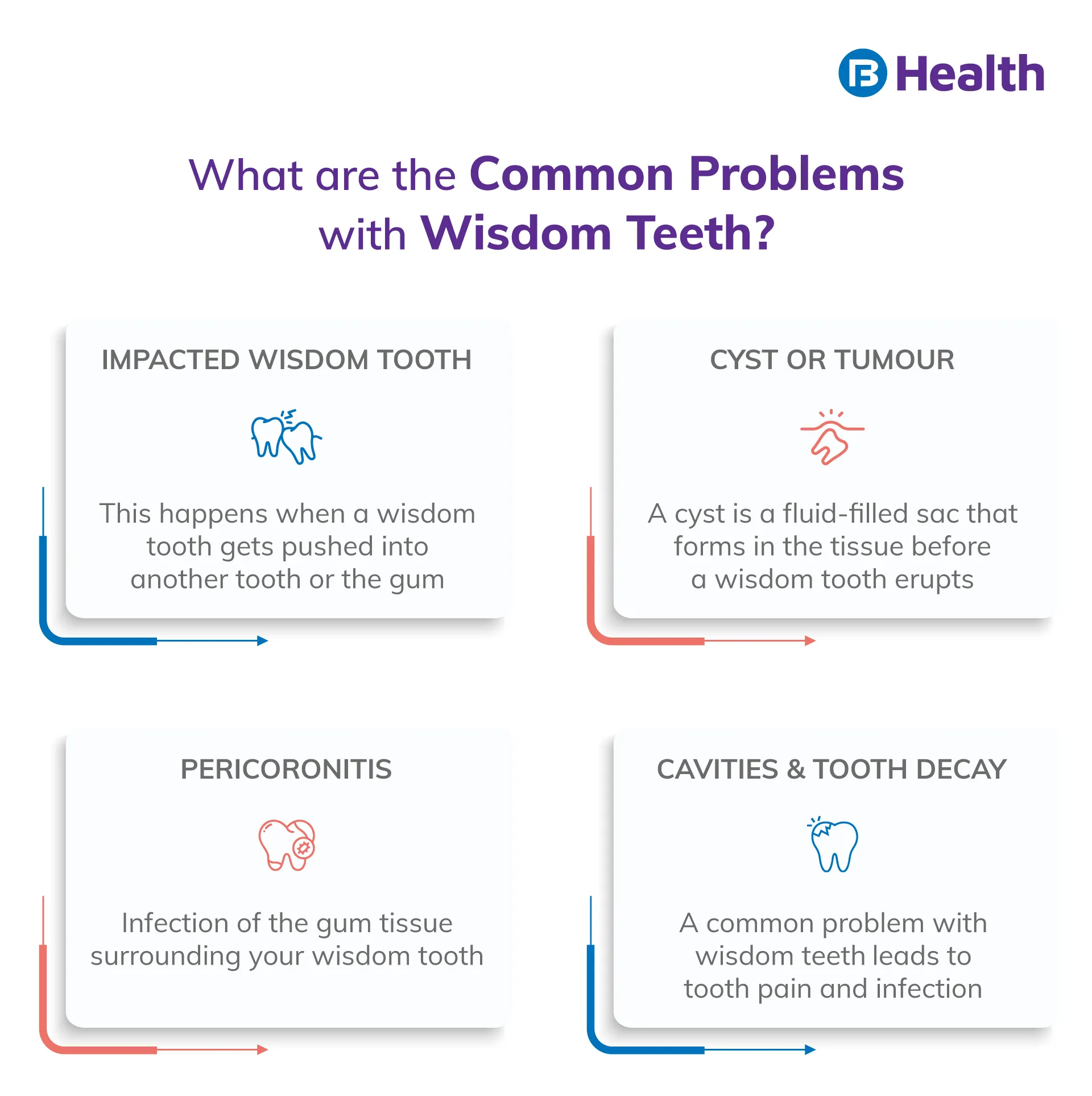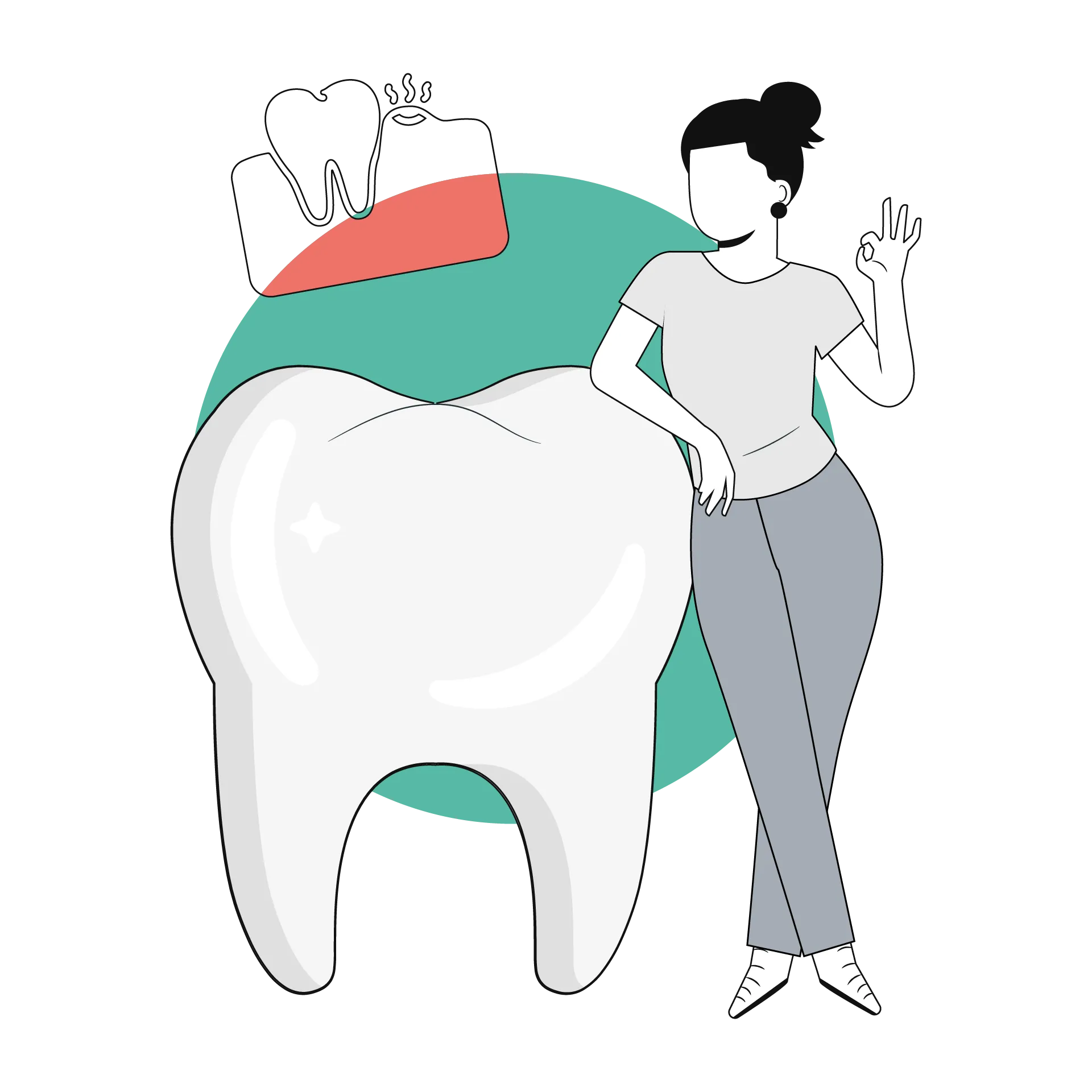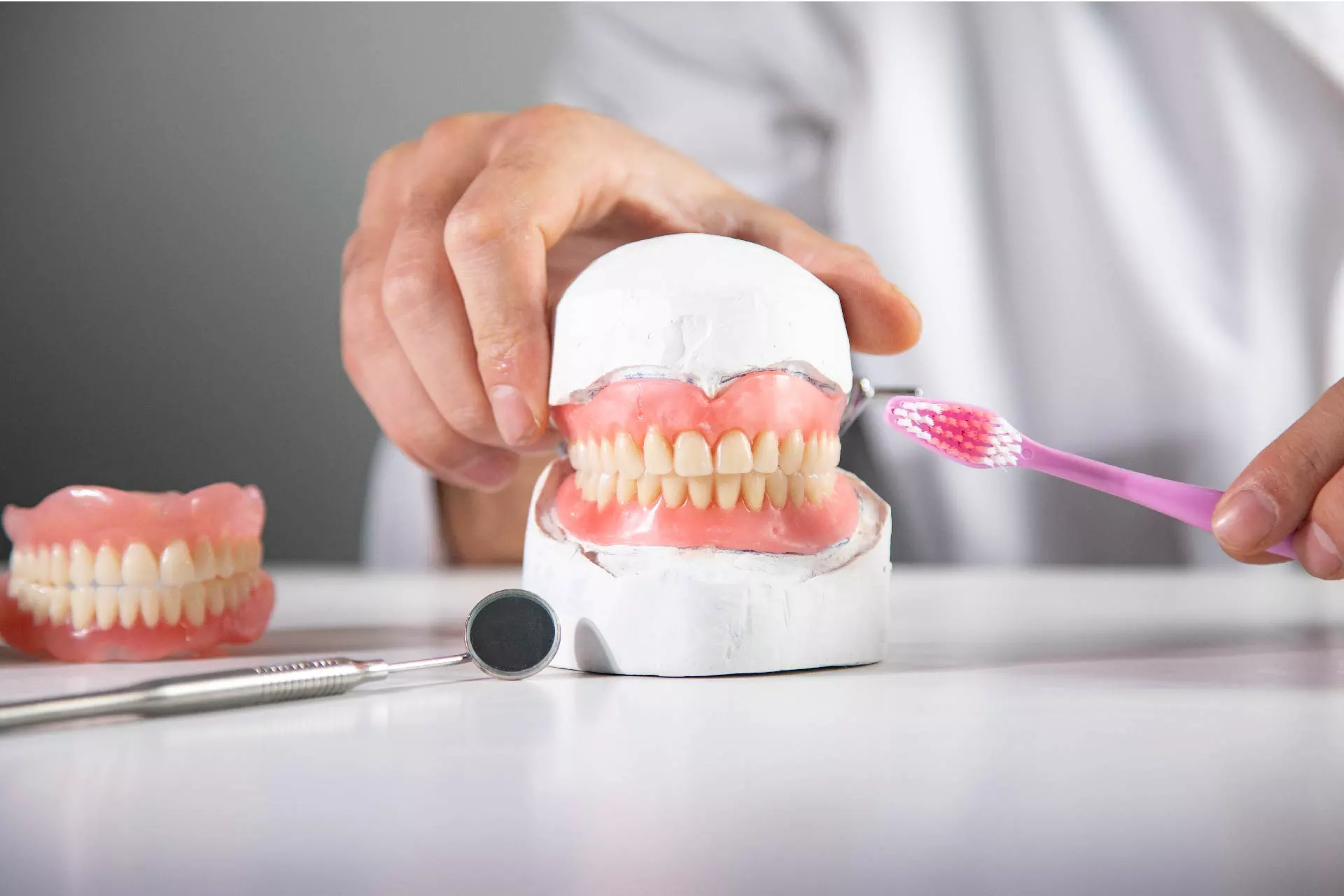Dentist | 5 min read
Wisdom Teeth: Symptoms, Problems and Removal Guide
Medically reviewed by
Table of Content
Synopsis
Wisdom teeth are the last set of teeth to appear in the mouth. They are located in the back of the jaw, usually on top of the last tooth in each jaw. Wisdom teeth can often be painful and interfere with your eating.
Key Takeaways
- Symptoms of wisdom teeth include pain in the jaw and face, tenderness around the teeth, swelling, and redness of the gum
- Wisdom teeth are often removed after they have stopped growing and become impacted in the jawbone
- If you are experiencing any of these symptoms, you may have a wisdom tooth problem
What are Wisdom Teeth?
The final set of molars to grow is your wisdom teeth. They typically emerge between the ages of 17 and 25 but can appear as late as 30. [1] These teeth are known as wisdom teeth, usually appearing when people are in their late teens or early twenties.
Wisdom teeth are generally very small but can cause problems if stuck past their normal place of emergence. For example, some people have no symptoms until they get their wisdom teeth. At the same time, others experience pain or discomfort after eating or drinking too much in one sitting.Additional Read: Teeth Whitening at HomeCommon Problems with Wisdom Teeth
Problems caused by wisdom teeth include impacted wisdom teeth, cavities, and gum disease. It can also cause tooth decay and pericoronitis, an infection around the wisdom tooth.
1. Impacted wisdom tooth
An impacted wisdom tooth is a tooth that pushes into another tooth or the gum, which can happen when your baby's first primary molars erupt. You don't want to remove them, so they remain in your mouth until they fall out naturally. However, sometimes this doesn't happen as planned, and you'll need to have your child's wisdom teeth removed.An impacted wisdom tooth may cause pain if it causes pressure on nearby nerves that innervate the surrounding jawbone. Impacted wisdom teeth are rare in most cases where there are no other underlying conditions causing pain or discomfort.

2. Cyst or Tumour
Cysts are sacs that are filled with fluid. A tumour is an abnormal cell development. Symptoms of a cyst or tumour include:
- Swelling, pain, tenderness, and redness in the tooth area
- Difficulty eating or speaking with that tooth
3. Pericoronitis
Pericoronitis is an infection of the gum tissue surrounding your wisdom tooth caused by poor oral hygiene, trauma, or a cracked tooth. Symptoms include pain, swelling, and redness at the base of your tongue.
4. Cavities and tooth decay
Cavities are a common problem with it, leading to tooth pain and infection. The best way to prevent cavities is by keeping your mouth clean, eating a healthy diet, and avoiding tobacco use. Be sure to get checked out by a dentist if the pain becomes severe or lasts for more than four days. Your dentist may need to take an X-ray of your mouth before deciding on treatment options like filling or wisdom tooth extraction.
Additional Read: Periodontitis: Causes, Symptoms
How to Know if I Have Wisdom teeth?
You may have been impacted by it if you are experiencing pain in your jaw. This is an uncommon condition when a tooth or teeth becomes trapped between two others, usually due to trauma. However, sometimes it can be mistaken for sensitive teeth.
If you are worried that your these teeth need to be extracted, you should know that this is a common cause of toothache. However, if you think that your wisdom teeth are not causing any pain, you can do a few things to help determine whether or not they are impacted.
If you have any of the following symptoms, your teeth are likely impacted:
- A sore on the gum below the impacted tooth (this could also be an infection)
- A gum infection (often caused by bacteria)
- Excessive bleeding when brushing or flossing
- Having difficulty biting or chewing food
Conventional means cannot remove impacted wisdom teeth because they are too close to other teeth or bones. There is a surgical procedure to remove wisdom teeth safely and effectively.
How are Wisdom Teeth Removed?
They are usually removed similarly to other teeth, but some variations exist. These are impacted wisdom teeth, wholly or partially embedded in the jawbone. They can also be called third molars. There are a few different ways to get your teeth out:
Incision and Extraction:
This is the most common method of removing wisdom teeth. The dentist will make an incision in the gum tissue at the bottom of your mouth and then remove your wisdom tooth. You won't feel any pain from this procedure because it only lasts about ten minutes. However, it does require general anesthesia for you to be asleep during this part of the procedure.
What Happens During Wisdom Teeth Removal?
The Removal procedure is a type of dental surgery that helps eliminate your impacted wisdom teeth. The process is usually done using general anesthesia, but other options are available depending on your needs and preferences.
During the surgery, anesthetics will numb the area around the patient's mouth and under their tongue. They'll be given medicine to make them comfortable, and then they'll be asleep during the procedure. While sleeping, special instruments will be used to remove their impacted wisdom teeth.
After the surgery, you can expect pain relief medication and possibly antibiotics if there is an infection present at the time of removal.
Additional Read: Tooth DecayWhat Does Recovery Involve After Wisdom Teeth Removal?
After removal, the process of recovery begins. This can last anywhere from a few days to two weeks.
You should also avoid eating hard foods for about six weeks after this procedure because chewing will pressure your newly-removed teeth and cause them to hurt when they come into contact with each other again.
You'll also want to take it easy on the liquids for about a week—no alcohol, caffeine, or sodas. After that, you can slowly start eating soft foods and watch for any swelling in your cheeks or jaw area. You may experience some swelling for up to three weeks after your procedure, which will disappear once your jawbone has healed.
If you have any of these problems, take action immediately to avoid bigger issues down the road. Get an online doctor consultation from Bajaj Health Finserv to speak with a dentist.
References
- https://bmcoralhealth.biomedcentral.com/articles/10.1186/1472-6831-13-37
Disclaimer
Please note that this article is solely meant for informational purposes and Bajaj Finserv Health Limited (“BFHL”) does not shoulder any responsibility of the views/advice/information expressed/given by the writer/reviewer/originator. This article should not be considered as a substitute for any medical advice, diagnosis or treatment. Always consult with your trusted physician/qualified healthcare professional to evaluate your medical condition. The above article has been reviewed by a qualified doctor and BFHL is not responsible for any damages for any information or services provided by any third party.





